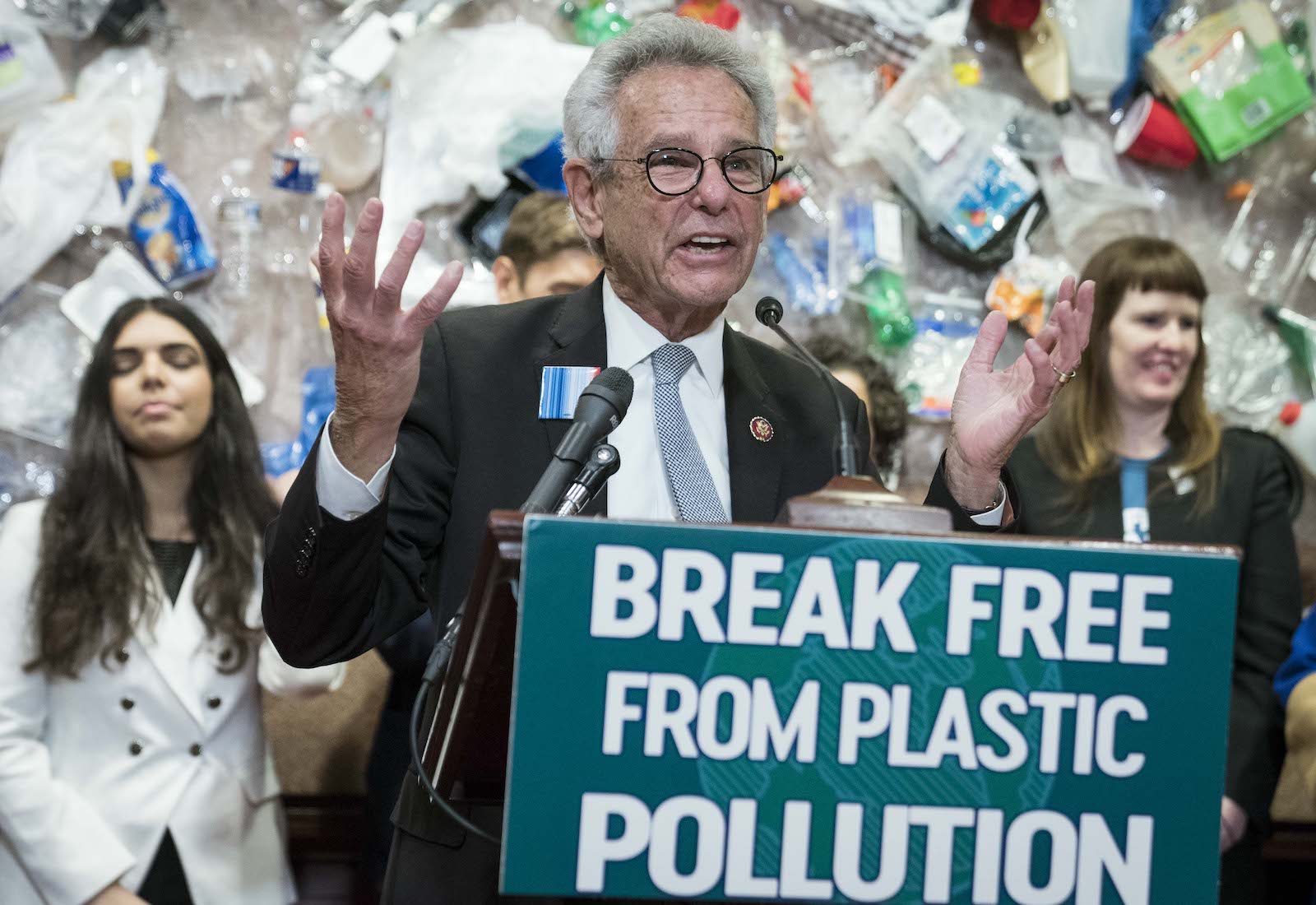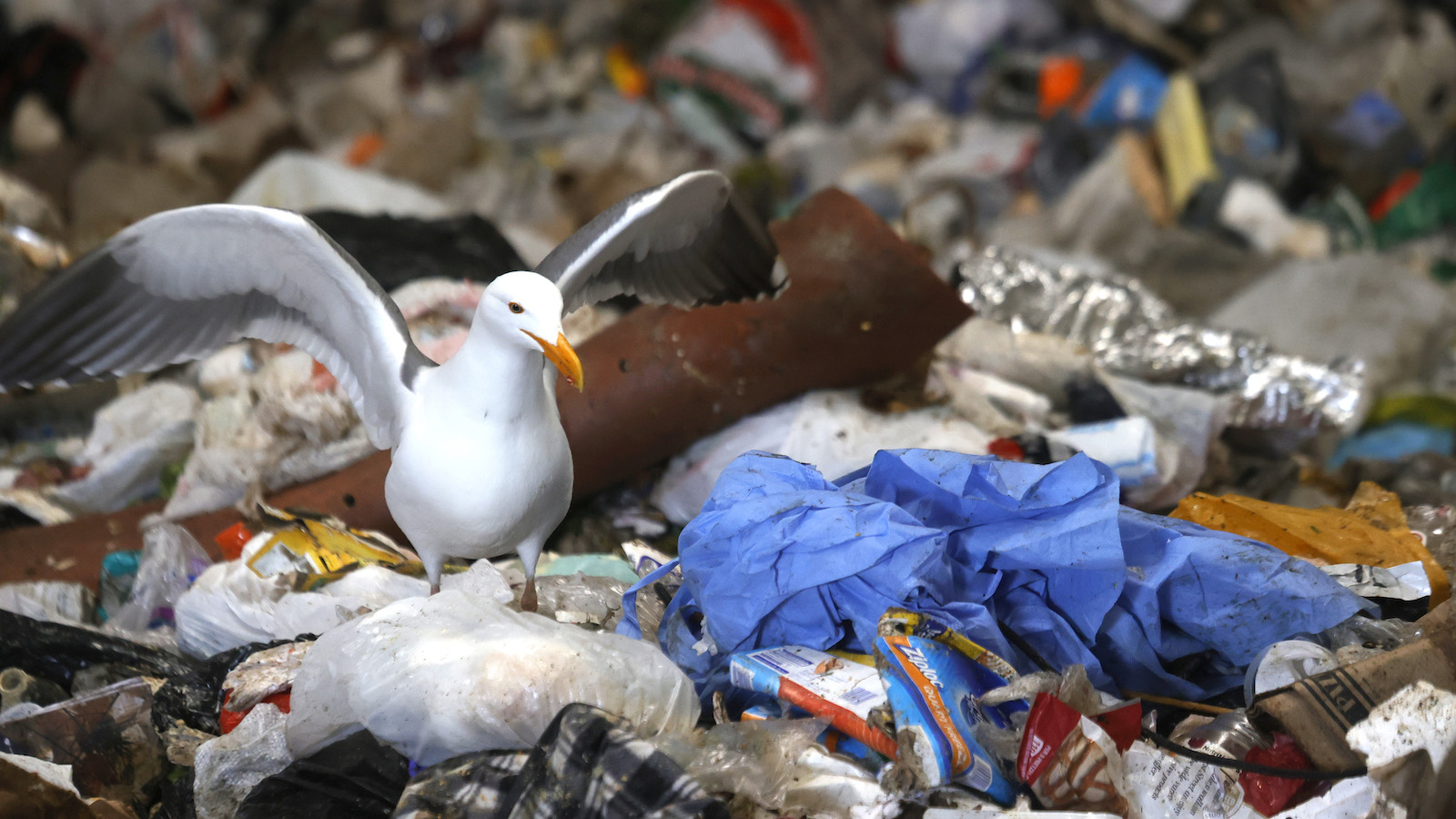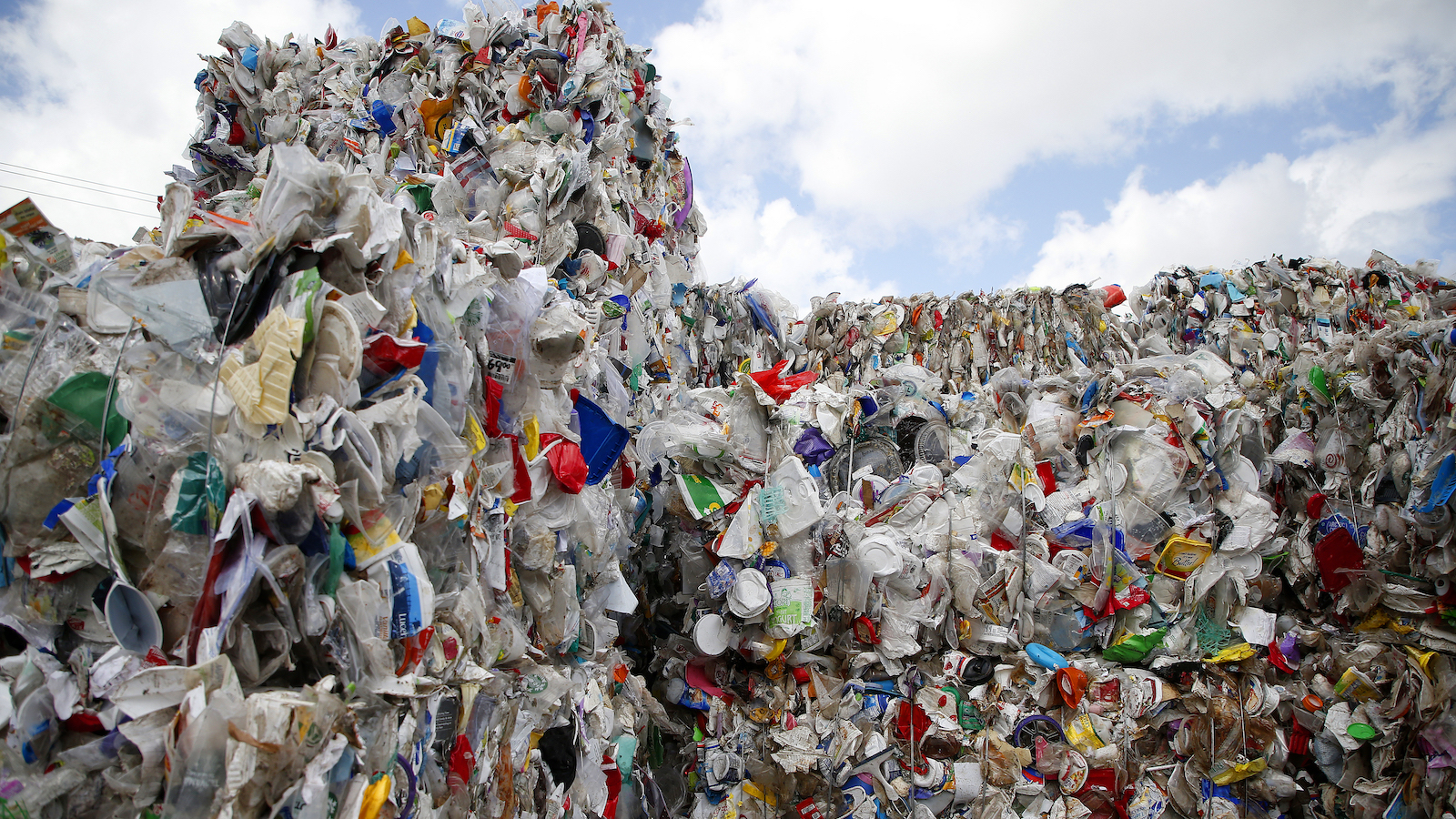A panel of experts last week made a simple, common-sense recommendation for dealing with the U.S.’s plastic pollution problem: Stop making so much plastic.
“Not producing waste in the first place is the best thing you can do environmentally,” said Jenna Jambeck, a professor at the University of Georgia’s College of Engineering and a coauthor of a high-profile report that was released last week by the National Academies of Sciences, Engineering, and Medicine.
It’s an idea that environmental activists have espoused for years. Beyond recycling and reusing the 42 million metric tons of plastic that the U.S. tosses out annually, they say, we should reduce the tide of plastic that is manufactured in the first place. Plastic production is a significant source of greenhouse gas emissions and pollution that harms frontline communities, and plastic waste clogs ecosystems around the world. Making less plastic would help on all three fronts.
Now that the recommendation is coming from the influential National Academies, advocates are hopeful that federal policymakers may give it greater credence, raising a major question: What would a national strategy to phase down the unsustainable production of plastic look like?
Perhaps the most direct route would be to implement a national cap on the production of new — or “virgin” — plastic. According to Paulita Bennett-Martin, federal policy director for the ocean protection nonprofit Oceana, this could involve Congress passing a law that empowers the Environmental Protection Agency, or EPA, to decide on a specific amount of new plastic that the country can produce annually — perhaps by targeting the production of “nurdles,” tiny beads of plastic that form the building blocks for larger products products. Each year, the EPA could gradually ratchet down its nurdles production cap, until by some year — say, 2035 — it would no longer be legal to make products from new plastic.
The benefit of a production cap is that it would cast a wide net, addressing a large swath of the plastic production pipeline through a single policy. And scientists have already advocated for a virgin plastic production cap on a global scale. In a special report published this summer in the prestigious journal Science, researchers called for a “legally binding agreement” to, among other things, phase down the creation of new plastic by 2040. Their recommendation built off of momentum from February’s meeting of the U.N. Environment Assembly, where many governments expressed interest in an international pact to combat plastic pollution.
In the U.S., there is precedent for the EPA banning chemicals that are harmful to human health and the environment — including polychlorinated biphenyls, dioxins, and fully halogenated chlorofluoroalkanes. But the U.S. has never phased out a product as widely used as virgin plastic, and any attempt to do so would no doubt face ideological opposition from conservatives and litigation from the plastic industry. Most advocates think a more realistic solution is a sweeping piece of legislation called the Break Free From Plastic Pollution Act, which uses other levers to reduce the manufacture of new plastic, like a requirement that plastic beverage bottles be made of at least 50 percent post-consumer recycled material by 2030, and 80 percent by 2040. It also proposes a moratorium on expanded plastic production facilities until they can undergo an environmental impact assessment from the EPA.

Alan Lowenthal, the California Democrat who introduced the bill in the U.S. House of Representatives in March, said its multifaceted approach would phase down plastic production just as effectively as a “command-and-control” production cap. But by incorporating market mechanisms and incentives, it is more likely to be tolerable to the plastics industry.
“They’d be much more resistant to a cap,” Lowenthal told Grist. “It’s easier for us to use market forces.”
For example, the bill intends to make recycled plastic cheaper to buy than virgin plastic — in part through its minimum recycled content requirements, which are expected to increase demand and create a bigger market for recycled plastic. Companies making more than $1 million in revenue from plastic products will also be required to participate in an “extended producer responsibility” system, which will place fees on companies that choose to make their products from virgin plastics. This system will also place greater financial responsibility on plastic companies for the collection and management of products after they’re used, making it more expensive to produce large quantities of disposable plastic. The plastic industry doesn’t exactly love these ideas, Lowenthal said, but sees them as less “offensive” than a production cap.
Lowenthal also noted that the bill would include a production phaseout, albeit only for specific types of single-use plastic products, like cutlery and grocery bags. Because these products make up such a disproportionately large portion of the world’s plastic pollution, he and others argue that phasing them out is an important step on the road to a cleaner future. Environmental advocates tend to agree, pointing to the growing number of states that have implemented bans on single-use plastic products. Judith Enck, former regional administrator for the EPA and founder of the advocacy group Beyond Plastics, cited her home state of New York as a good example: After a ban on the distribution of plastic bags started being enforced in October 2020, Enck saw a noticeable decline in litter from plastic bags.

“Banning and phasing out some of the worst plastic offenders just makes sense,” Enck said. She called states like New York “laboratories” for these kinds of policies, hoping that they will eventually lead to a nationwide phaseout of single-use plastic products — akin to the Directive on Single-Use Plastics that the European Union implemented in July of this year. Under the directive, E.U. member states are banned from making 10 single-use plastic products, including straws, plates, and polystyrene food containers.
Of course, industry opposition poses a significant hurdle to much of the U.S.’s proposed plastic-related legislation. Although plastic trade groups like the American Chemistry Council say they support a “national strategy” to reduce plastic waste in the environment, they remain opposed to any efforts to decrease the production of plastic — which, as last week’s National Academies report made clear, is a critical component of any effective strategy to address plastic pollution. The American Chemistry Council has even argued that reducing plastic production would lead to “worse environmental outcomes, particularly related to climate change.” Responding to Grist’s request for comment, the council said it based this claim on the fact that lightweight plastic materials require less fuel to transport than alternative materials like glass and aluminum. The council also said it opposes a virgin plastic production cap and the Break Free From Plastic Pollution Act, although it supports much weaker versions of some of the act’s provisions, like a minimum recycled content standard for plastic manufacturing.
Lowenthal dismissed their complaints, saying their position “has nothing to do with science.” He expressed optimism that, despite industry “pushback” and opposition from some members of Congress, important provisions of the Break Free From Plastic Pollution Act will pass in 2022. The bill currently has 121 cosponsors in the House and 12 in the Senate. It’s backed by high-profile politicians including Representative Alexandria Ocasio-Cortez and Senators Bernie Sanders and Elizabeth Warren.
Enck agreed with Lowenthal, hoping that lawmakers will see past industry efforts to undermine the Break Free From Plastic Pollution Act and other policies to scale down U.S. plastic production. “We have to listen to the science,” she said, referring to last week’s report from the National Academies. “We have really smart ideas and policies to tackle plastic pollution. But what the environmental community does not have is the political strength that the chemical producers and fossil fuel industry have.”



